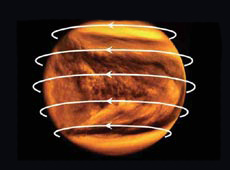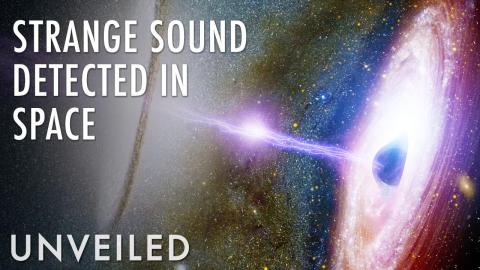
The first infrared images making use of the ‘windows’ show complex cloud structures, all revealed by the thermal radiation coming up from different atmospheric depths. Venus Express also made use for the first time ever from orbit of the so-called 'infrared windows' present in the atmosphere of Venus – if observed at certain wavelengths, it is possible to detect thermal radiation leaking from the deepest atmospheric layers, revealing what lies beneath the dense cloud curtain situated at about 60 kilometres altitude. "Studies have already begun to dig into the properties of the complex wind fields on Venus, to understand the atmospheric dynamics on local and global scales." "Venus Express has the tools to investigate these structures in detail," added Svedhem. Spotted for the first time by Mariner 10 in the 1970s, they may be due to the presence of dust and aerosols in the atmosphere, but their true nature is still unexplained. Views of the southern hemisphere of Venus in visible and ultraviolet light show interesting atmospheric stripe-like structures. Thanks to these first pictures, it has also been possible to observe the presence of a collar of cold air around the vortex structure, possibly due to the recycling of cold air downwards. Atmospheric vortexes are very complex structures that are very difficult to model, even on Earth. However the mission is just at the beginning and it's doing fine we expect this and many other long-standing mysteries to be addressed and possibly solved by Venus Express," he added. "Also, we are still not able to explain why the global atmospheric circulation of the planet results in a double and not single vortex formation at the poles. "We still know very little about the mechanisms by which the super-rotation and the polar vortexes are linked," said Håkan Svedhem, ESA’s Venus Express Project Scientist.

This 'super-rotation', combined with the natural recycling of hot air in the atmosphere, would induce the formation of a vortex structure over each pole. High velocity winds are known to spin westwards around the planet, and to take only four days to complete a rotation.



Only glimpses of the stormy atmospheric behaviour at the south pole were obtained by previous missions (Pioneer Venus and Mariner 10), but such a double-eye structure was never clearly seen before now. The most striking of these is a huge, double-eye atmospheric vortex over the south pole, not dissimilar from the equivalent structure present at the north pole – the only one previously studied in some detail. This made it possible to obtain first clues about the Venusian atmospheric dynamics on a global scale, before the spacecraft got closer and started observing the planet in greater detail.ĭuring this first orbit – called the 'capture orbit' – some of the Venus Express instruments were used to perform the first observations at different distances from Venus, for a few hours per time on six different slots between 12 and 19 April 2006.Īmazing infrared, visible and ultraviolet images of the Venusian globe already reveal several atmospheric features of great interest. This orbit represented for the Venus Express scientists a unique opportunity to observe the planet from large distances. On 11 April this year, Venus Express was captured into a first elongated orbit around Venus, which lasted 9 days, and ranged between 350 000 and 400 kilometres from Venus' surface.


 0 kommentar(er)
0 kommentar(er)
